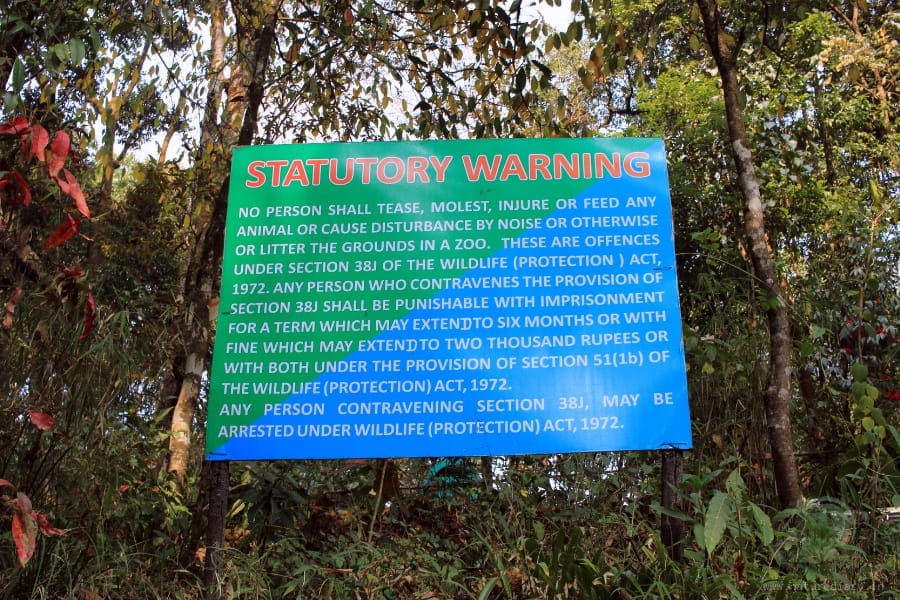Padmaja Naidu Himalayan Zoological Park, commonly known as Darjeeling Zoo, is the highest altitude zoo in India at an average elevation of 7000 ft. It is one of the major attractions in Darjeeling sightseeing, which attracts about 300000 visitors every year. Spreading over an area of 67.56 acres, the zoo is specialized in captive breeding programs for the snow leopard, red panda, and critically endangered Himalayan wolves.
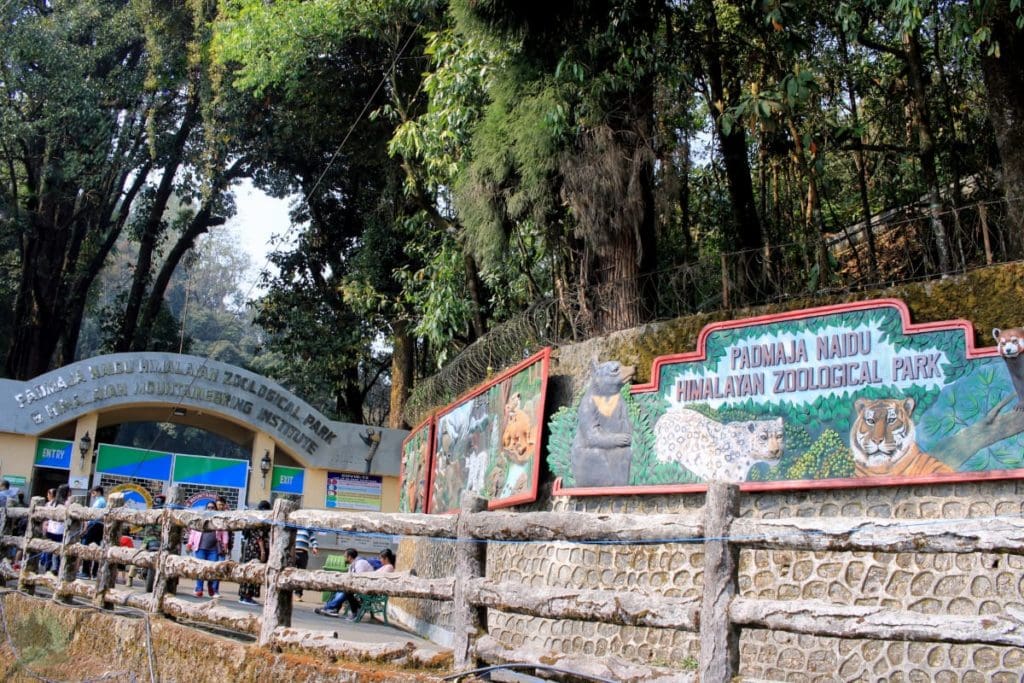
History of Padmaja Naidu Himalayan Zoological Park, Darjeeling
The zoo was opened as Himalayan Zoological Park on 26th July 1957 as a joint venture between the Governments of West Bengal and India. After visiting the zoo in 1975, Srimati Indira Gandhi, former prime minister of India, renamed it Padma Naidu Himalayan National Park in honour of Padmaja Naidu, the former governor of West Bengal. The park was transferred to the forest department of West Bengal in May 1993, and now it is also popularly known as Darjeeling Zoo.
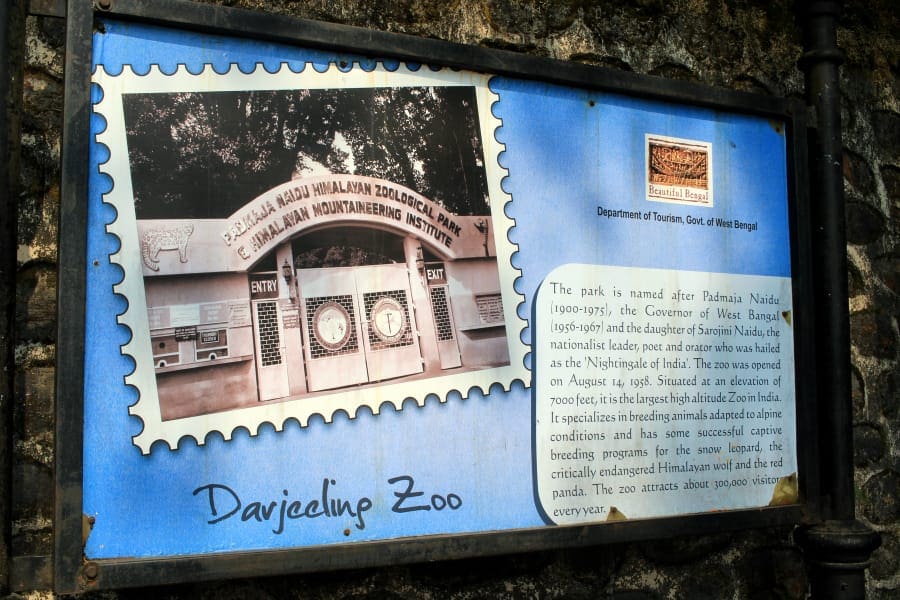
Animals, birds, and other attractions of Darjeeling zoo
As you enter through the zoo’s gate, you will see souvenirs and small food shops on the left. On the right hand, you will find a detailed map of the zoo which comes in pretty handy during the visit. The comfortable weather of Darjeeling makes the zoo ideal for these wild animals.
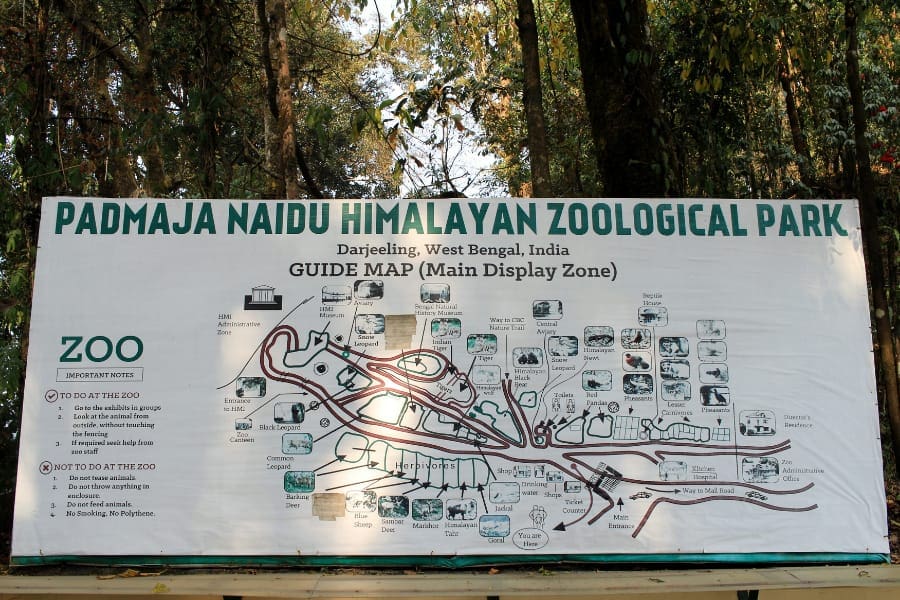
As you proceed more, you will reach the centre point of the zoo. Here, you will see a beautiful garden full of ornamental plants and flowers. There is also a facility for a toilet nearby this location.
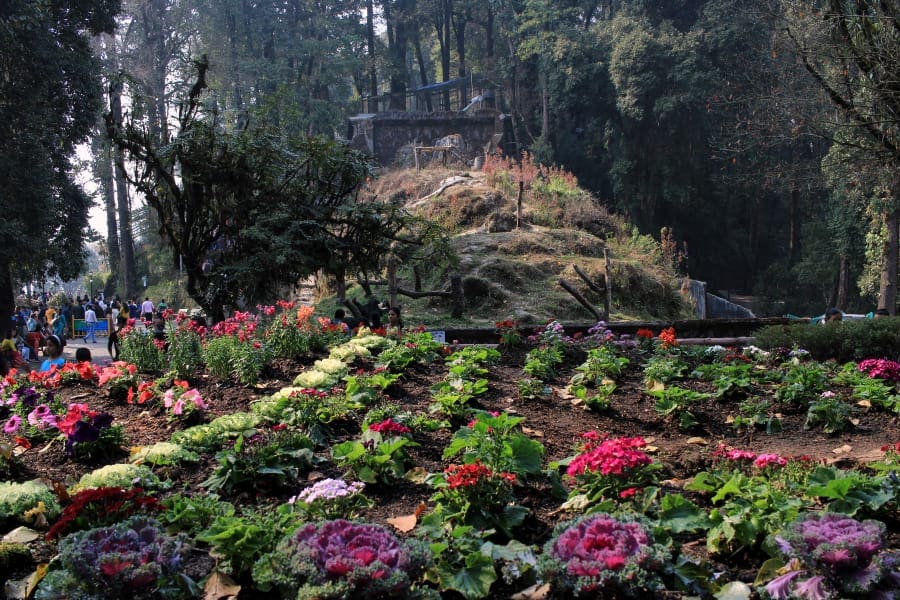
in the uphill direction, you can see the most famous red pandas of Darjeeling zoo. The zookeepers follow a strict diet chart for the red pandas. Each day, one egg, four bananas, 300 ml milk, 4 kg bamboo leaves, 30 ml honey, 200 g apple, and 200 g seasonal fruits are allocated for them.
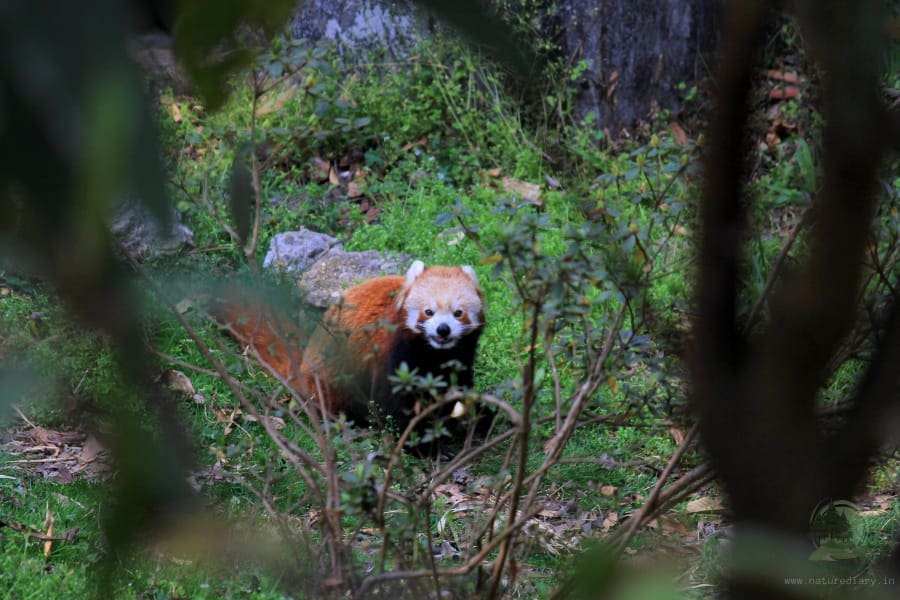
You will surely enjoy the activities of the cute little red pandas. These small endangered mammals are native to the eastern Himalayas and can also be seen in Singalila National Park nearby Darjeeling. Please keep silent while watching the red pandas as they are solitary animals and hide when disturbed.
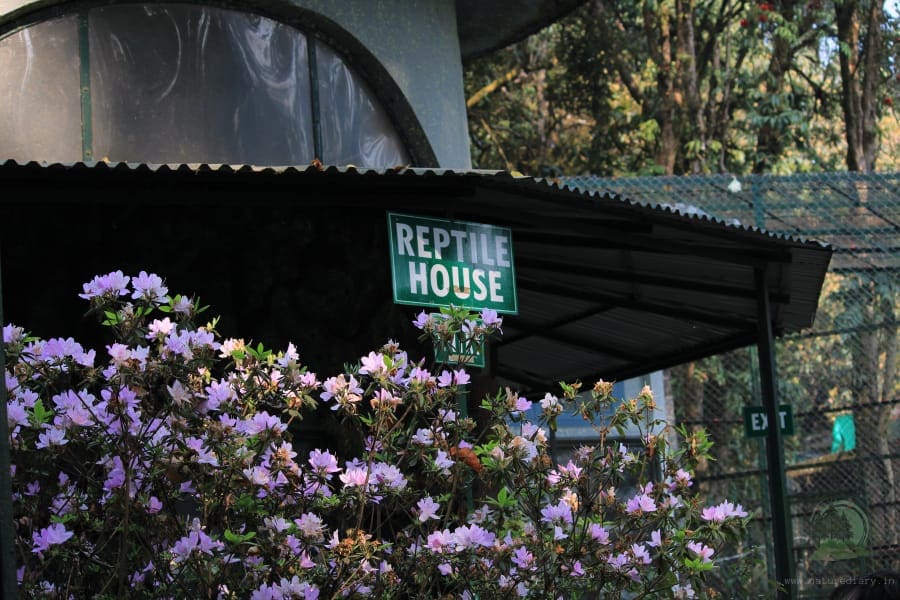
A little further up from the red Panda’s enclosure, you can see the reptile house. The house consists of Indian Rock Python, Russel Viper, Indian Sand Boa, and other endangered snakes. Besides the reptile house, small animals like the leopard cat, common palm civet, commonly known as toddy cat, and slow Loris can be seen further up on the road.
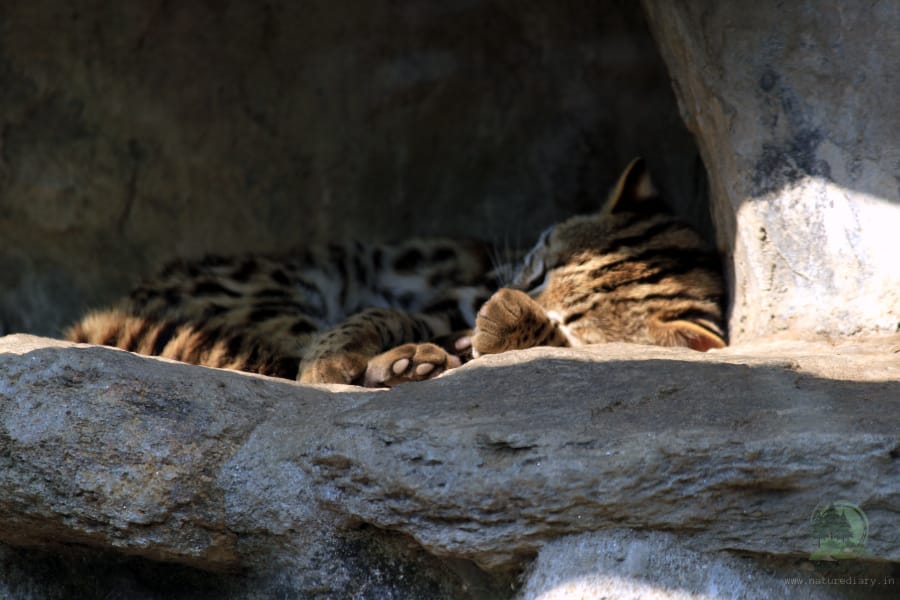
After crossing the small animals’ enclosure, you can see the birds of the pheasant family. The most impressive birds of Darjeeling zoo are Temminck’s Tragopan, the bright red-and-orange coloured pheasant, Himalayan Monal with multicoloured plumage, Lady Amherst’s pheasant, and Reeves’s Pheasant.
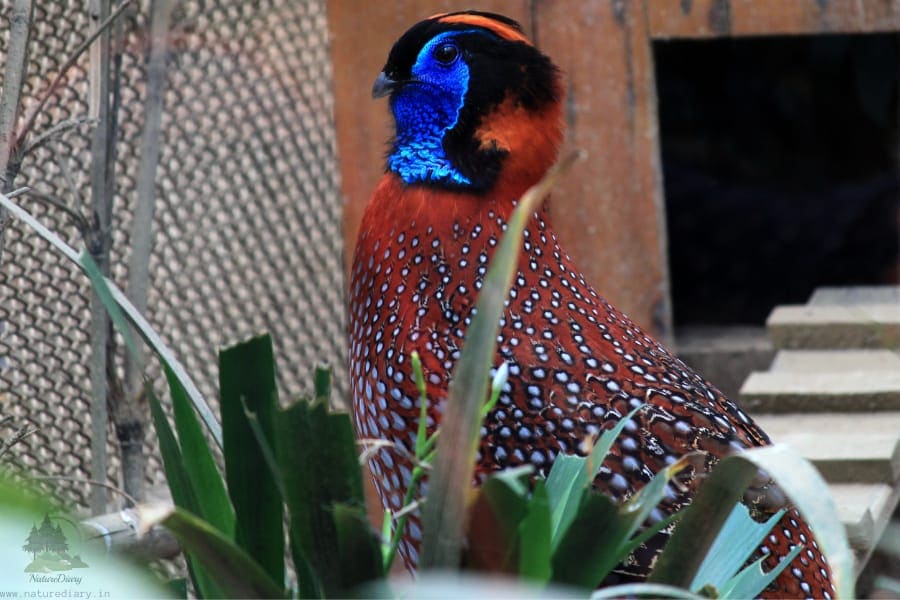
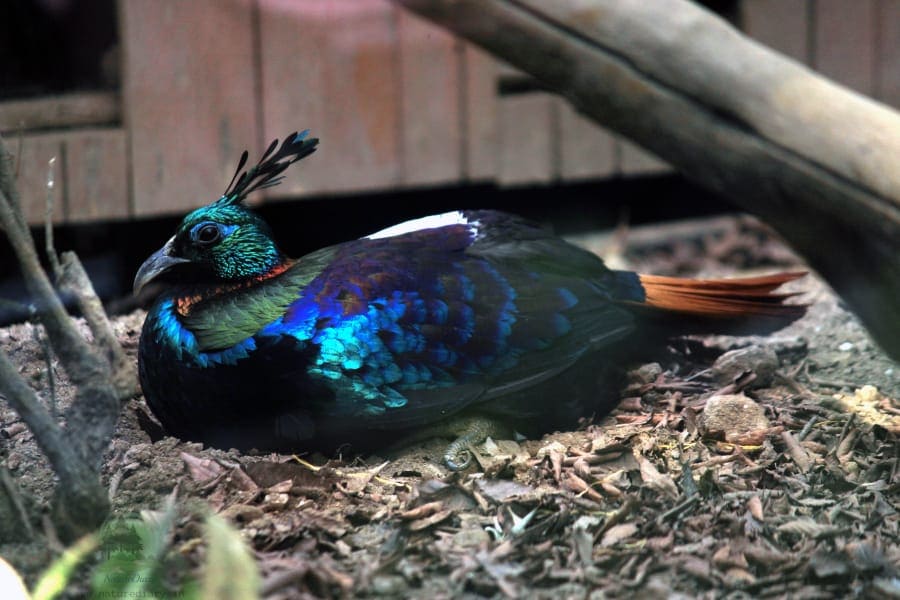
After seeing these birds, you have to go back to the centre point of the zoo, right beside the enclosure of the Himalayan black bear. This animal is a major attraction of Darjeeling zoo.
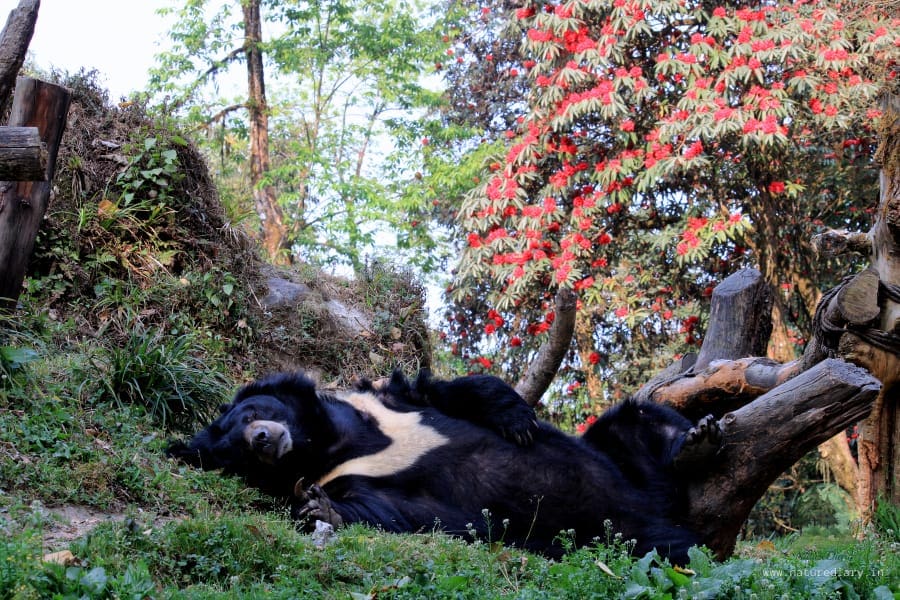
On the opposite side of the bear, you will see the Himalayan Tahrs, beautiful wild goats with a threatened population. Besides the enclosure of Himalayan Tahrs, there are Markhors, a large Capra species with screw-shaped horns and a beard. You can see the Sambar deer in the next section. It is the largest among Indian deer, common in forested hillsides and woodlands in India. You can also see Bharal or Himalayan Blue Sheep with a short, dense coat and slate grey, sometimes with a bluish sheen.
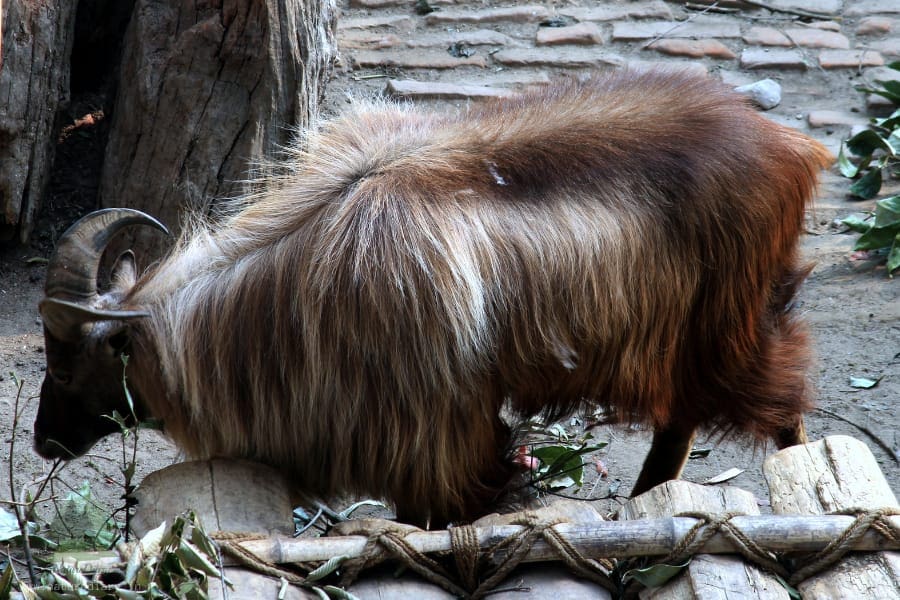
After that, if you go a little further up, you will see the Himalayan Mountaineering Institute. You can visit there or climb up along the road to see the tigers and wolves of Darjeeling zoo. You will see a snow leopard and a black panther on the right side of the pathway.
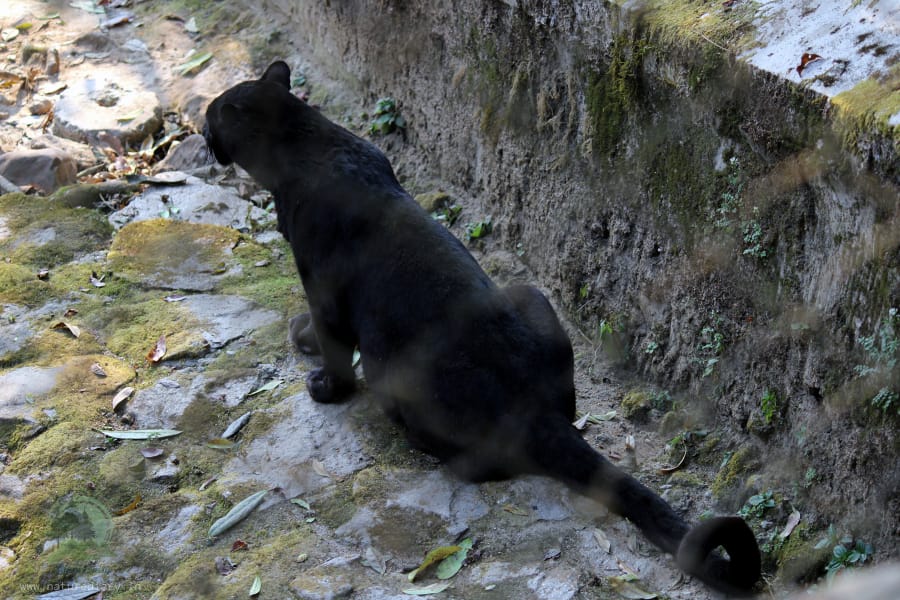
After walking a little more, you will see the aviary located at the highest point of the zoo. Blue gold Macaw, rose-ringed parakeet, silver pheasant, galah rose-breasted cockatoo parrot, and the grey parrot will surely amaze you.
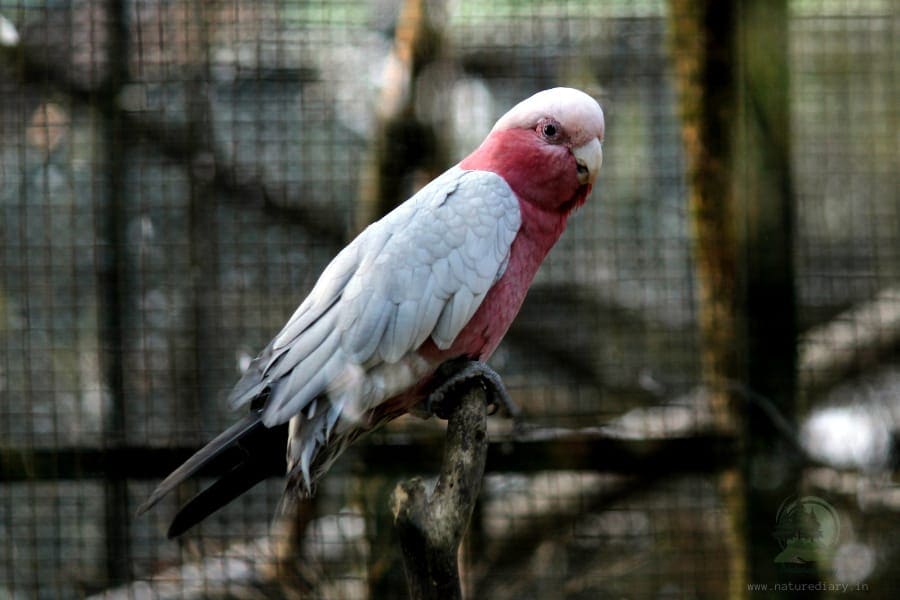
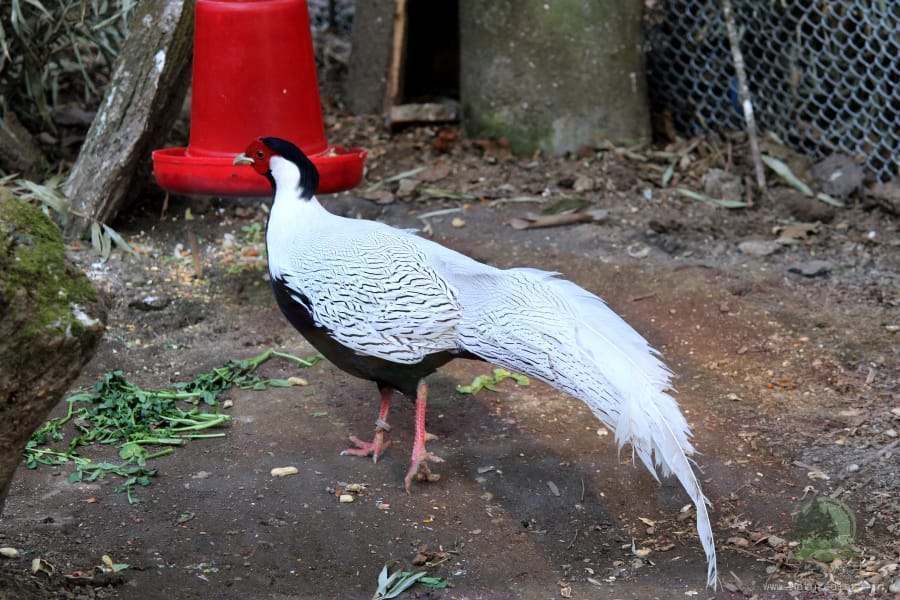
Next to the aviary, you can visit the Bengal Natural History Museum, which houses a vast collection of stuffed specimens of birds, reptiles, mammals, insects, etc. From the museum, a pathway leads down to the entry point of the zoo.
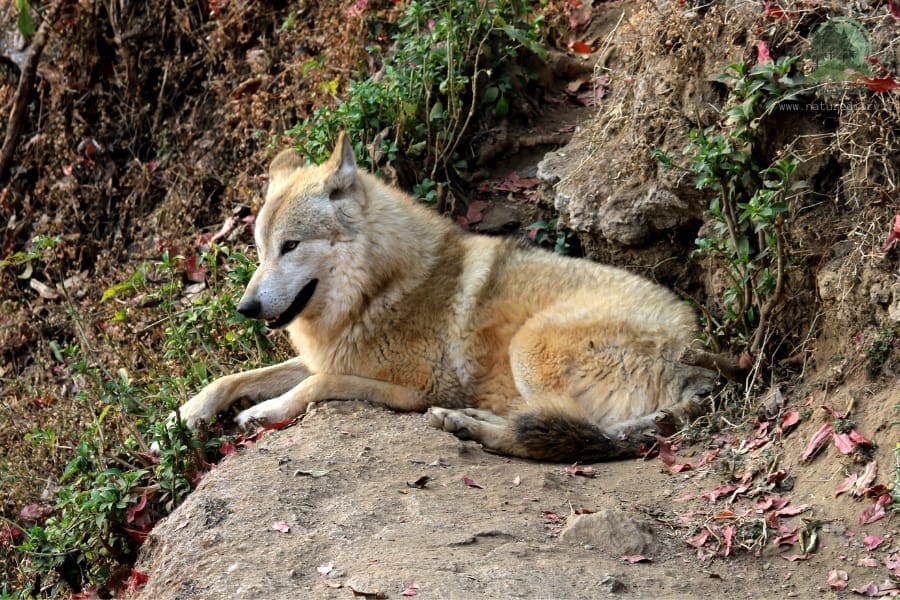
The Himalayan wolves can be seen on the right-hand side of the road. And a little further, to the left, you will see the Royal Bengal Tiger roaming around. The enclosure of the bear can be seen again on the left.
How to reach the zoo in Darjeeling?
The zoo is located at Jawahar Parvat on Jorethang Road near Birch Hill Resort. During your sightseeing in Darjeeling, visit the zoo and other tourist places like Rock Garden, Batasia Loop, Tea Gardens, and Peace Pagoda. The charge for the car ranges from ₹3000 to ₹5000, depending on your itinerary and type of car. However, if you only want to visit the zoo, hire a taxi from Chowk bazaar in Darjeeling 3 Km away. The zoo is located uphill beside Lebong Cart Road. From the parking point, it takes five to ten minutes to reach the entrance gate of the zoo.
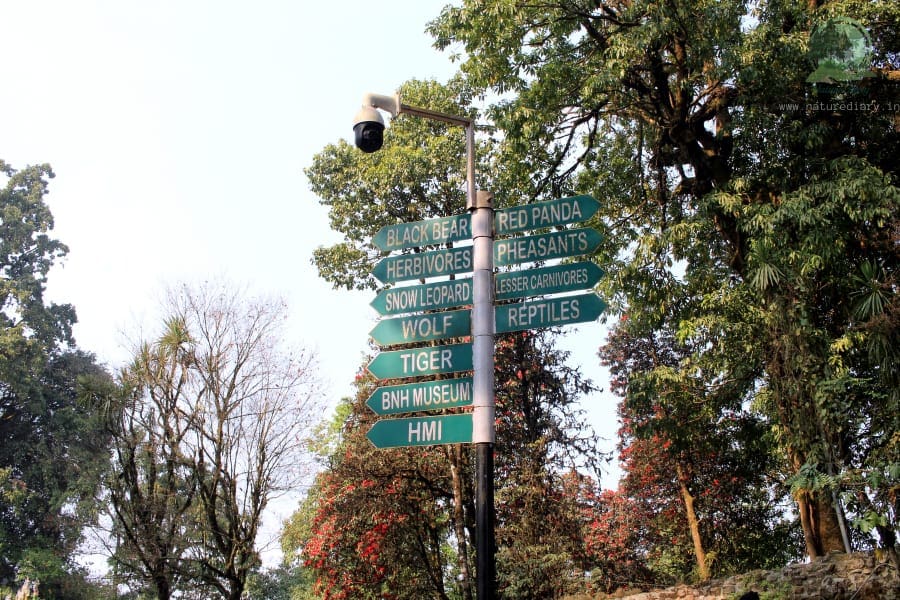
Entry fee and visiting time in Darjeeling zoo
The entry fee for the zoo is ₹60 for Indians and the people of SAARC countries and ₹100 for other foreign countries. With the same ticket, you can also visit the Himalayan Mountaineering Institute and the Bengal Natural History Museum. Apart from it, ₹10 is charged for the still camera.
Visiting hours at the zoo is from 8.30 AM to 4 PM. However, on Thursdays, the zoo remains closed. During other festivals, the visiting hours might differ. So, if you are visiting the zoo during the festive season, you can directly call their phone number 03542253709 to know the exact timing on that day.
